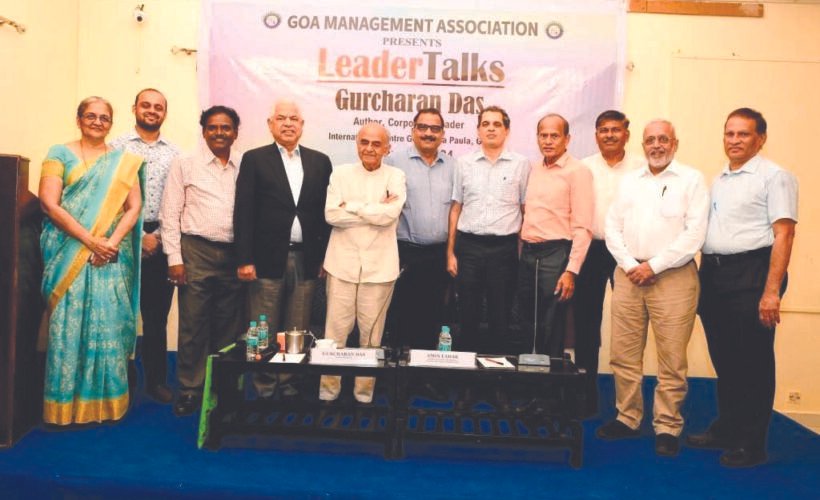
Goa Management Association organised a LeaderTalks session by Gurcharan Das, author and corporate leader, former CEO of Procter & Gamble India at the International Centre Goa.
Das, in his talk, spoke on liberals, the different types of liberals, how the movement started in the West, and the reference to liberalism in the Rig Veda (and hence the concept is not really a Western import as far as India is concerned). He also commented on India’s leaders from the past who were liberals, such as Raja Rammohan Roy, Swami Vivekananda, Rabindranath Tagore, B. R. Ambedkar and C. Rajagopalachari.
Das traced the liberalism movement in India from 1947, through today, using his own experiences in life as points of reference. He narrated a story of how during a flu pandemic, his company upped the production of Vicks Vaporub to provide solace to the affected population and how that led to penalisation (and a potential jail sentence for him as a senior officer of the company) from the Licence-Raj government, which then quietly dropped the case when he reminded them of how the news on international media would look against the government.
He spoke about the 1991 Liberalisation movement by former Prime Minister Narasimha Rao and Finance Minister Manmohan Singh, which led to reduced taxed, abolition of licences and import controls, broken public sector monopolies, etc. This was done in a stealth mode for the fear of the powerful Left forces, even within their own party. This event, over the next decade, lifted 375 million Indians out of poverty and expanded the middle class from 10% to 33% of the population. The economy grew during this decade at an average of 7.5% per annum, while the population growth reduced from 2.2% per annum to 1.5% per annum. This was a golden period. He spoke about how corruption and a reversal to the ‘equity overgrowth’ formula had paralysed the same Congress party that brought in liberalisation in the first place, and how the BJP came to power with an overwhelming majority because of this paralysis. He spoke about how demonetisation was implemented in a way that hurt the poor more than the corrupt rich it was supposed to hurt. Das also spoke about how GST was an eventual success, how the digital revolution doubled the banking population and also removed a lot of middleman corruption and helped the poor. Das concluded by narrating a story of a devout middle aged lady applying vermillion to the forehead of a Nataraja statue in a museum. For her, God was everywhere, including in an artefact kept in a museum. This made him wonder as a liberal: My secular world vs. her sacred world, my 900-year old object of beauty vs. her God, my aesthetic pleasure vs. her divine darshan. Was she more tolerant because she was able to see God everywhere?





